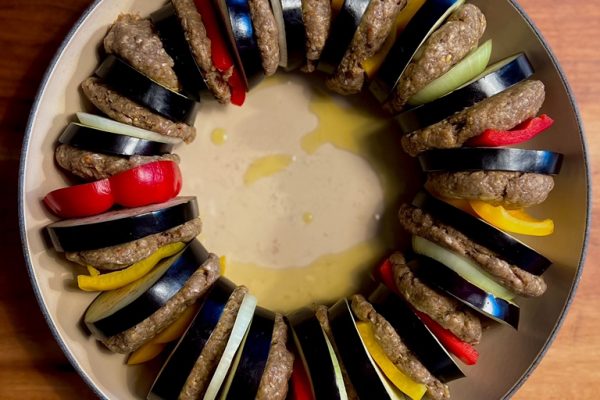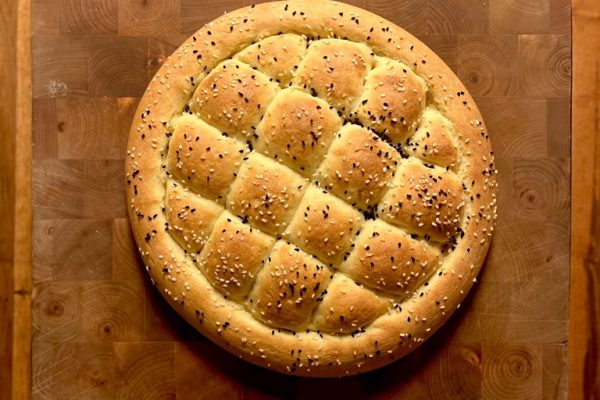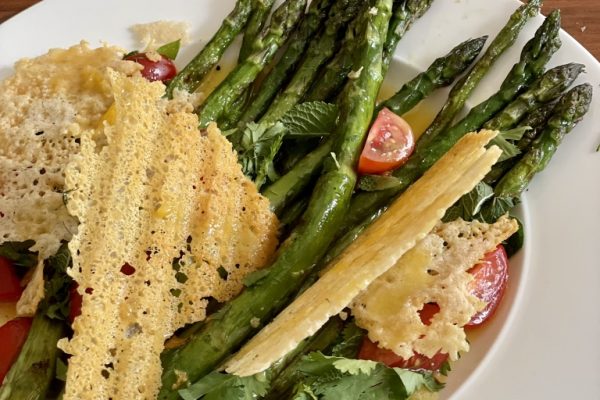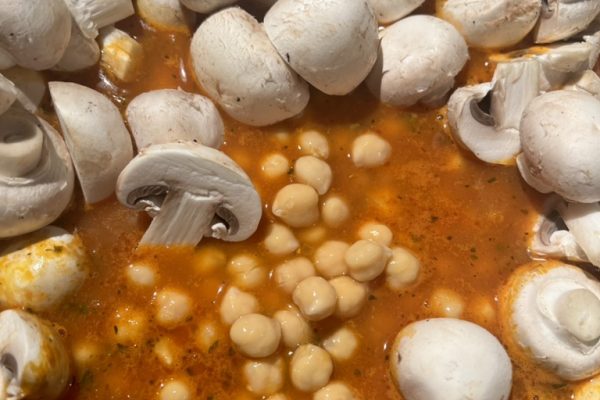Tantanmen is a variation of Japanese ramen that is derived from a famous dish in Chinese Sichuan cuisine: Dan Dan noodles, and we definitely need to present a recipe for those too ( they’re always getting more and never less…).
As always in our ramen series, we recommend reading this overview of the art of ramen first.
A chicken and pork broth is typically used for a Tantanmen. We have explained the cooking technique here.
As always, you will find the ingredients for today’s broth at the end of the recipe.
The flavouring (“tare”) of this ramen is made with sesame paste, which is called Neri Goma in Japan. Outside Japan, you simply use tahini, which should be available almost everywhere.
The seasoning oil must be chilli oil, which is best made at home and stored.
Marinated eggs ( Ajitsuke Tamago) should also not be missing and are best prepared a day or more in advance, the recipe can be found here as well.
The broth also needs time, namely at least three hours. If you have the time, it’s better to give it up to five. All the ingredients are placed in a large pot and covered with 4.5 litres of water, which is slowly brought to the boil over a medium heat.

When the stock boils, foam forms on its surface, which must be skimmed off with a fine sieve.

Then the stock is left to simmer gently without a lid and you have plenty of time to prepare the other ingredients.
White sesame seeds are dry roasted in a pan or small pot and crushed a little in a mortar to release their full flavour.

In a pan with a little sesame oil, Doubanjiang is roasted over a medium-high heat. This is a Chinese fermented paste made from chilli and beans, which is a must-have in our household and can be kept almost forever.
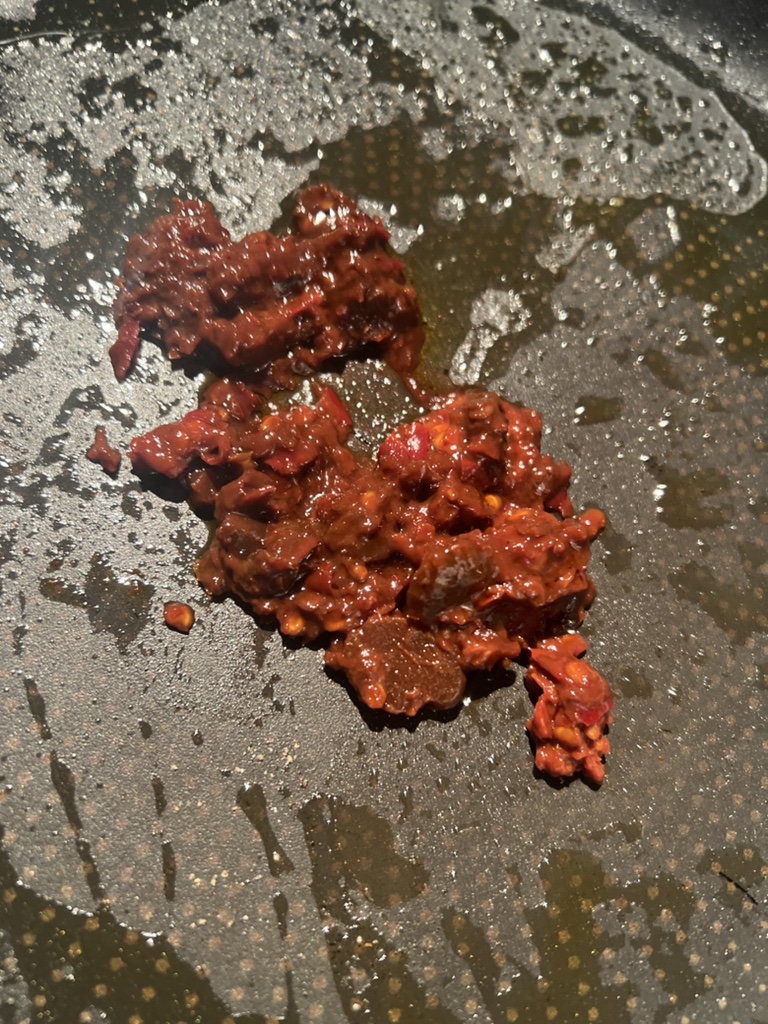
We add minced pork, stir-fry for 4 minutes until crumbly, then add grated ginger and garlic and finely chopped spring onions.

After a further 4 minutes or so, we season with soy sauce and ground white pepper. Salt is not required here.

The stalk is cut off pak choi. The leaves are blanched in salted, boiling water for 90 seconds and immediately placed in water that is as cold as possible to stop the cooking process and preserve the colour. Bean sprouts are cooked in the same water for just 30 seconds and also placed in cold water.
We cut spring onions into fine rings and keep them in a bowl of cold water too.
The finished broth is poured through a fine sieve and a handful of bonito flakes (Katsuobushi) are sprinkled on top. The fish flakes immediately soak up the liquid and sink to the bottom.

Now you can stir gently and taste the broth. After about 4 – 5 minutes, the flavour of the bonito is intense enough, the broth is passed through a sieve again and finally seasoned with salt.
We cook the ramen noodles according to the packet instructions, in this case for 4 minutes. They are then also placed in cold water so that they retain their bite.
Before serving, we put our large ramen bowls in the oven at 40 degrees Celsius for 10 minutes to heat them up.
We also bring our broth to the boil and get the noodles and roast meat ready…

…as well as our prepared vegetables and the now halved marinated eggs.

Now everything is done very quickly: we pour sesame paste and a little chilli oil into each bowl…

…pour in about 450 ml of boiling stock and stir everything briefly with a whisk. A portion of noodles each is added to the very hot stock, where they immediately regain their temperature. On top we arrange pan-fried meat, vegetables and halved eggs. Finally, the ramen is sprinkled with toasted sesame seeds and this heavenly dish is finished:
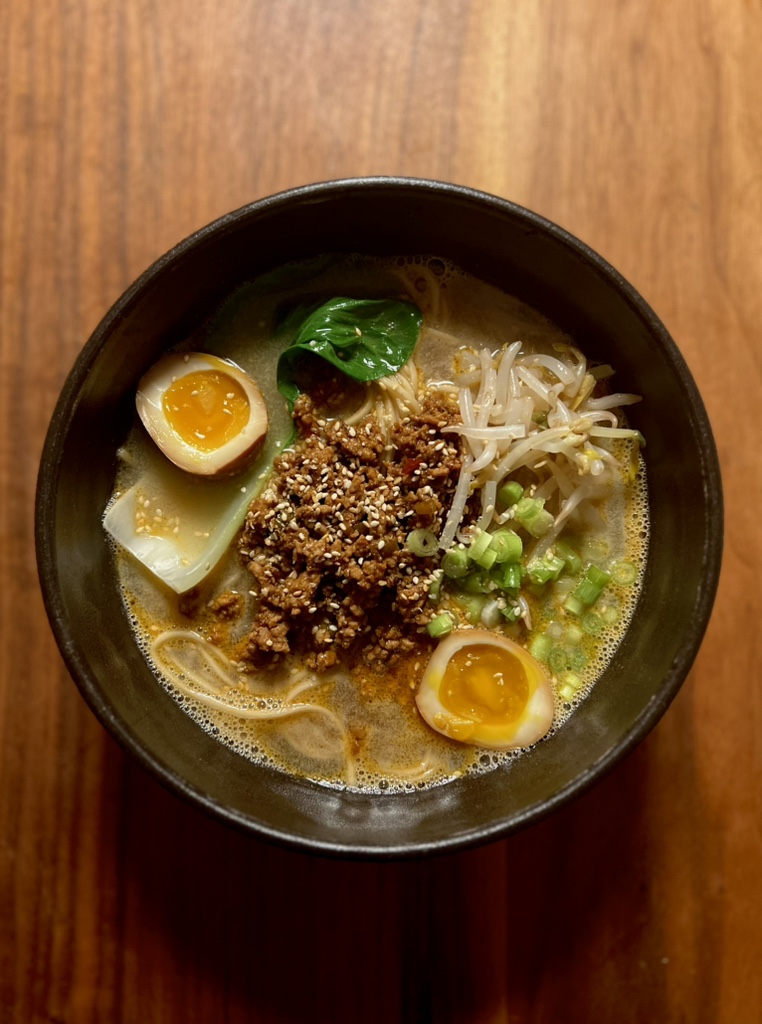
Enjoy.
And may the taste be with you.
Ingredients (for 4 people):
1.8 litres of stock, the recipe makes double the amount (the rest can be frozen):
1 chicken for soup
200 g pork bacon
1 onion
1 leek
4 spring onions
2 garlic cloves
4 – 5 cm ginger, sliced
6 dried shiitake mushrooms
50 g konbu seaweed
20 white peppercorns
1 handful of bonito flakes ( Katsuobushi)
Salt
4 portions of ramen noodles
8 tbsp sesame paste ( Neri Goma or Tahini)
8 tsp chilli oil
Meat:
2 tbsp sesame oil
2 tbsp Doubanjiang
400 g minced pork
1 tbsp each ginger and garlic, grated
4 spring onions
3 tbsp soy sauce
White pepper
Toppings:
1 – 2 pak choi
4 spring onions
150 g bean sprouts
4 marinated eggs
2 tbsp white sesame seeds, toasted

